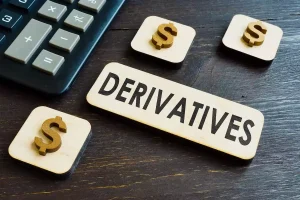With the rise of cryptocurrency, interest in virtual assets has significantly increased. Investing in crypto coins has become common among various categories of individuals. The most famous cryptocurrencies remain BTC and ETH, but now, more than 10,000 crypto coins and tokens are in turnover. Most of them constantly experience ups and downs due to considerable volatility and poor management. It forces field participants to diversify their asset portfolio and look for a reliable service provider to deal with in the market. This blog post will analyze the features of interacting with a crypto index fund and inform you about the various stages of the procedure.
What is a Crypto Index?
A cryptocurrency index is a standard of the performance of various virtual coins that are listed on exchanges. Such virtual assets match liquidity and market cap norms.
Market cap is the actual worth of certain virtual coins multiplied by asset volumes relative to the dollar. If this indicator rises, the crypto index also increases. Conversely, the parameter decreases if the virtual coin value falls against USD.
An economic instrument that monitors the effectiveness of various kinds of virtual resources is implemented to provide clarity about this emerging and unique asset category.
Dealing with crypto indices is usually more profitable than commercial operations with crypto coins. It is due to diversification and economic gain. Such financial instruments allow capital holders to trade and invest in one financial vehicle instead of controlling multiple assets simultaneously. The crypto index spreads the risk because you are not subject to fluctuations in the worth of a single coin. It is an effective method of providing access to new or well-known crypto-saving projects.


Turnkey Brokerage Solution For Your Business
Get the most profitable fully licensed fx/crypto brokerage software or ready-to-operate business in 48 hours. Best-in-class web & mobile trading platforms, sales-driven CRM, full integration with MT4/5, and 150+ payment providers.
Understanding Cryptocurrency Index Funds
A cryptocurrency index fund is an investment vehicle designed to mirror the performance of a particular cryptocurrency index. Its effectiveness will correspond to the crypto index’s performance. Some exchange traded funds (ETFs) and mutual funds monitor virtual coins’ parameters.
In the first stage, let’s analyze index funds in a broad sense. They are a class of mutual systems that includes some categories of investor capital. Instead of buying many assets randomly, funds control the selected assets and direct participants’ capital to them. The investor makes a one-time investment while the fund allocates capital among different assets in its index. The most famous indicator, the S&P 500, includes the 500 most significant American organizations.
Such options offer lower commissions than mutual solutions because they are passively handled. The commission for any category of funds is known as the expense ratio. It is the sum the fund charges as a percent of its assets.
As you may have guessed, crypto index funds are financial vehicles that invest in a chosen cryptocurrency category. Today, they are more theoretical. There have not been many perspective attempts to form classic investment instruments that control certain categories of virtual cash.
How Do Crypto Index Funds Work?
Crypto index trading suggests a diversified investment portfolio. It assists in decreasing risk because if one coin exhibits negative trends, others may develop rapidly, normalizing the fund’s entire performance.
As we know, such an organization has a qualified investment manager. It creates a diverse crypto coin portfolio corresponding to a controlled index or basket. In such a situation, the efficiency directly related to the basic index or basket’s performance.
Investors may obtain fund securities, exposing them to major crypto coins without direct ownership. This is a beneficial solution for entrepreneurs who are not very familiar with virtual cash or feel concerned purchasing a single coin. Additionally, such funds are classified as passive crypto investment strategies. This is because the manager does not actively purchase and sell basic virtual cash.
Such baskets set special management commissions. Some funds add expense ratios. Management commissions are the money a fund charges to cover administrative spending. The expense ratio is the percent of the organization’s full resources for other expenditures, including commercial and custody charges.

Advantages of Cryptocurrency Index Funds
Such financial vehicles provide users access to a variety of virtual coins rather than having to focus on one digital asset. Let’s consider other advantages of such solutions:
- Diversification: Interaction with crypto index funds enables you to create a diversified portfolio of virtual assets, decreasing the volatility risks of a single virtual coin.
- Precise handle: Systems are controlled by investment experts with extensive experience. They conduct in-depth research and analysis to determine the most promising investment options. It is complicated for individual entrepreneurs to cope with such tasks independently.
- Financial benefit: Interacting with a crypto index fund may be a more effective solution than purchasing and selling separate digital coins. The skilled manager can utilize economies of scale and negotiate a minimum commission.
- Simple cooperation: When dealing with such financial structures, customers can take advantage of the potential development profits of the entire crypto domain without collecting information about specific digital resources, decreasing users’ hassle.
As a rule, index funds provide participants with permanent data about the subject’s activity and what is presented in the portfolio.
Risks Associated with Crypto Index Funds
Interacting with such financial instruments offers many profits, but you should also remember the risks. One key downside is volatility. Virtual assets are known for considerable instability, reflected in the worth of derivative instruments. Market participants should be prepared for sudden changes in the value of investments.
Don’t forget about access problems. Regions without crypto exchanges and developing countries prohibit access to decentralized exchanges (DEX). In addition, people who lack access to economic services or the poor cannot interact with such funds, even in those states where cryptocurrency exchanges operate.
The subsequent risk is related to regulation. Crypto coins are not controllable in different regions, making it complex for entrepreneurs to understand what assets they are dealing with. Entrepreneurs should study and grasp the legislative framework before dealing with such a financial vehicle.
Finally, investors should be mindful of commissions. As a rule, crypto funds require a management commission, which can vary greatly depending on the chosen system. Potential participants should realize the upfront spending to evaluate their revenue.
How to Invest in Crypto Indices?
Interacting with such financial instruments is an excellent solution for accessing a considerable selection of crypto coins without spending time choosing and handling each asset. Let’s look at the primary stages of investing:
- Research: Study what financial instruments are available. Choose solutions that are respected and owned by trusted organizations. Track historical data and feedback from other clients.
- Determine the instrument: After you have chosen the optimal solution, you must open an account with the management firm on the virtual platform. You may be required to provide individual data and verify your identity.
- Account replenishment: After creating a profile, you must deposit cash or a blockchain wallet. Each fund independently sets the minimum replenishment sum.
- Purchasing shares: After depositing capital into the account, clients may purchase shares of the cryptoindex fund. The value of securities depends on the fund’s net asset value (NAV), which is determined based on the worth of the basic resources. The NAV raises or decreases with the instrument it follows.
- Monitoring investments: After purchasing securities, it is necessary to track the investment and ensure it performs optimally. Some systems let clients manipulate securities on the secondary exchange, while others require customers to save their shares for a specified interval.
- A person may want to control his profits or losses. To do this, one needs to monitor the NAV and collate it with the sum he paid for the assets.
If you decide to work with such financial vehicles via a brokerage account, your list of options is restricted. The only solution that meets the strict rules is the Bitwise 10.
In the following years, crypto funds will actively develop as concern for crypto coins increases. This will lead to more complex and unconventional instruments and improve the industry’s regulations.
The expansion of such financial instruments will raise the liquidity of virtual cash and make it available to various categories of people. Essentially, the future tendencies of crypto funds depend on the situation in the virtual money field and the demand for including such instruments in an assets’ portfolio.






